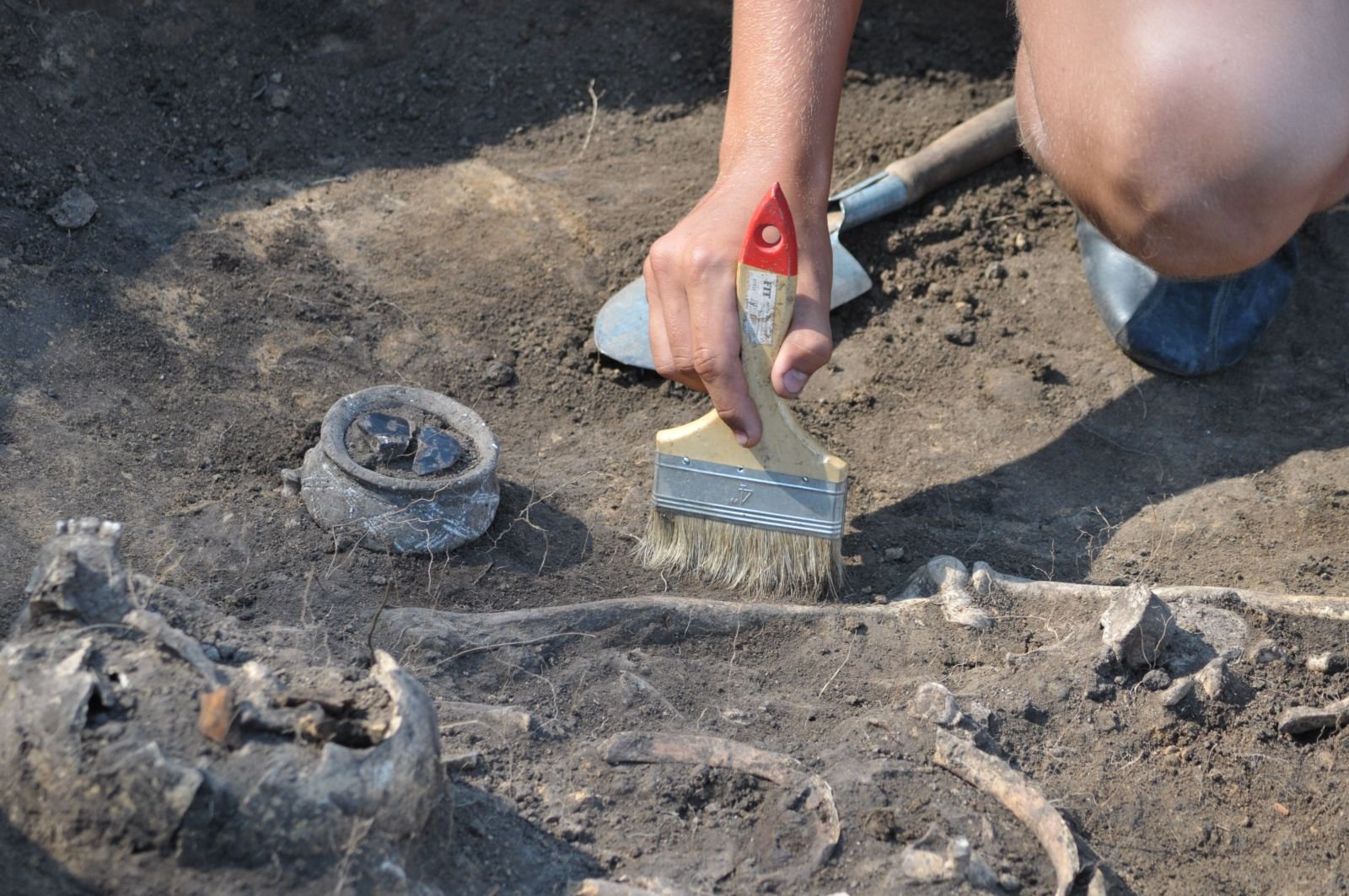Georgia is one of the first cradles of ancient civilizations. Even Heinrich Schliemann, the most successful archeologist so far, who explored Troy, was interested in study of Georgia, but Tsarist Russia responded him with refusal. In the second half of the XIX century and the beginning of the XX century, important archaeological findings were made in Georgia.
In almost all parts of Georgia they found a lot of monuments from the late Paleolithic period to the Middle Ages. Finds and study of the monuments of Trialeti Kurgan culture of the Bronze Age were of great importance not only for Georgia, but for archeology of Minor Asia also. Findings in Mtskheta, Vani, Uplistsikhe Dmanisi Nokalakevi, Urbnisi and other parts of Georgia, made it possible to learn about the formation and development of the first specifics of the Georgian state, cities and urban life, as well as a wide variety of industrial products.
Dmanisi (Kvemo Kartli)
Dmanisi is a fortified town of Middle Ages. In historical sources it was first mentioned in IX century. In 1223 David IV Agmashenebeli liberated Dmanisi and turned it into a Royal town that was a reason of its special advantage in XII-XIII centuries. Here passed caravan ways toward Central Asia. In XIV-XV centuries Dmanisi resisted several assaults causing economic decline and devastation of the town. In 1992 archeologists discovered here the remains of human bodies. The German paleoanthropologists proved that these remains are 1.800.000 years old. Therefore, these are the remains of the oldest human beings on the Eurasian continent.
Uplistsikhe (Shida Kartli)
Uplistsikhe is located on the left bank of river Mtkvari, 10 km from the town of Gori. It can be detected on the southern slope of Kvernaki mountain range, on the area of 10 ha. It is the only monument of Antique time in Georgia, which nowadays remained above the surface of the ground. Town has streets, squares, water drainage ducts, various constructions, four gates, etc. Today the fortified town is an outdoors museum.
Gonio-Apsaros (Adjara)
The fortress belonging to the Antique and Middle-Age era is situated 12 km south of the city of Batumi. First reference of the fortress of Gonio in the historical sources under the name of Apsarunt belongs to author Plinius Secundus (I century). The fortress used to be a well reinforced and conveniently fortified town where 5 Roman cohorts (3 000 warriors) had a station. Due to strategic location, it always was a focal point for Rome, Byzantine and Genoa republics. In 1547-1878 it fell under control of the Ottoman Empire.
From XII century on the fortress is referred to as the Gonio fortress. As the legend goes, one of the prophets of Christ – Matata is also buried in Gonio.
Nokalakevi (Samegrelo)
Nokalakevi was a political center of Colchis (Egrisi) in Antique and early Christian times, the capital of the Kingdom of Lazika (IV-VIII cc.). It is located 17 km from the town of Senaki to the North-East. The Greek sources of later times call this township Archeopolis (in Georgian "Nokalakevi" or "Old Town". Both local and imported ceramics, bronze items, necklace, copper and gold coins have been excavated on the territory of the fortress.
Vani (Imereti)
This is the most important town of Antique era Colchis. In the history of Antique Vani two periods can be sorted out: VI-IV centuries and III-I centuries BC. Vani was the center of administrative entity of the Colchis Kingdom and residence of governing elite. Wooden cult and domestic fixtures, diverse ceramics (black-polished, black and red figurines, clay and metal utensils) and rich burial sites which prove close trade, economic and cultural ties with the Greek world, belong to this epoch. In I century BC the Antique town ceased to exist.
Dzalisi (Kartli)
50 km from Tbilisi
3rd-2nd Millenium BC
Dzalisi Archaeological site consists of several layers from the Bronze Age (3rd-2nd Millenium BC). It was the second Capital of Kartli Kingdom up to the period of its decline from 5th c. AD to 8th c. AD. The site represents an amazing architectural complex - the residence of the second King of Kartli Kingdom whose reign lasted from the middle of the first century AD up to the 5th century. The site boasts four palaces and hypo-caustic baths, acropolis, swimming pool, administrative part, barracks for soldiers, water supply system and burial grounds of the first settlements (Second millennium BC). The baths are famous with splendid mosaics depicting scenes from the ancient Greek mythology which are influenced by the Dionysus cult.
NOKALAKEVI (Samegrelo)
350 km from Tbilisi
13th c BC
Nokalakevi was a political center of Colchis (Egrisi) in Antique and early Christian times, the capital of the Kingdom of Lazika (IV-VIII cc.). It is located 17 km from the town of Senaki to the North-East. The Greek sources of later times call this township Archeopolis (in Georgian "Nokalakevi" or "Old Town". Both local and imported ceramics, bronze items, necklace, copper and gold coins have been excavated on the territory of the fortress.
Gonio-Apsaros (Adjara)
395 Km from Tbilisi
1 st C AD
The fortress belonging to the Antique and Middle-Age era is located 12 km from Batumi. First reference of the fortress of Gonio in the historical sources under the name of Apsarunt belongs to author Plinius Secundus (I century). Due to strategic location, it was always a focal point for Rome, Byzantine and Genoa republics. In 1547-1878 it fell under control of the Ottoman Empire.
From XII century the fortress is called the Gonio fortress. As the legend goes, one of the prophets of Christ – Matata is also buried in Gonio.



